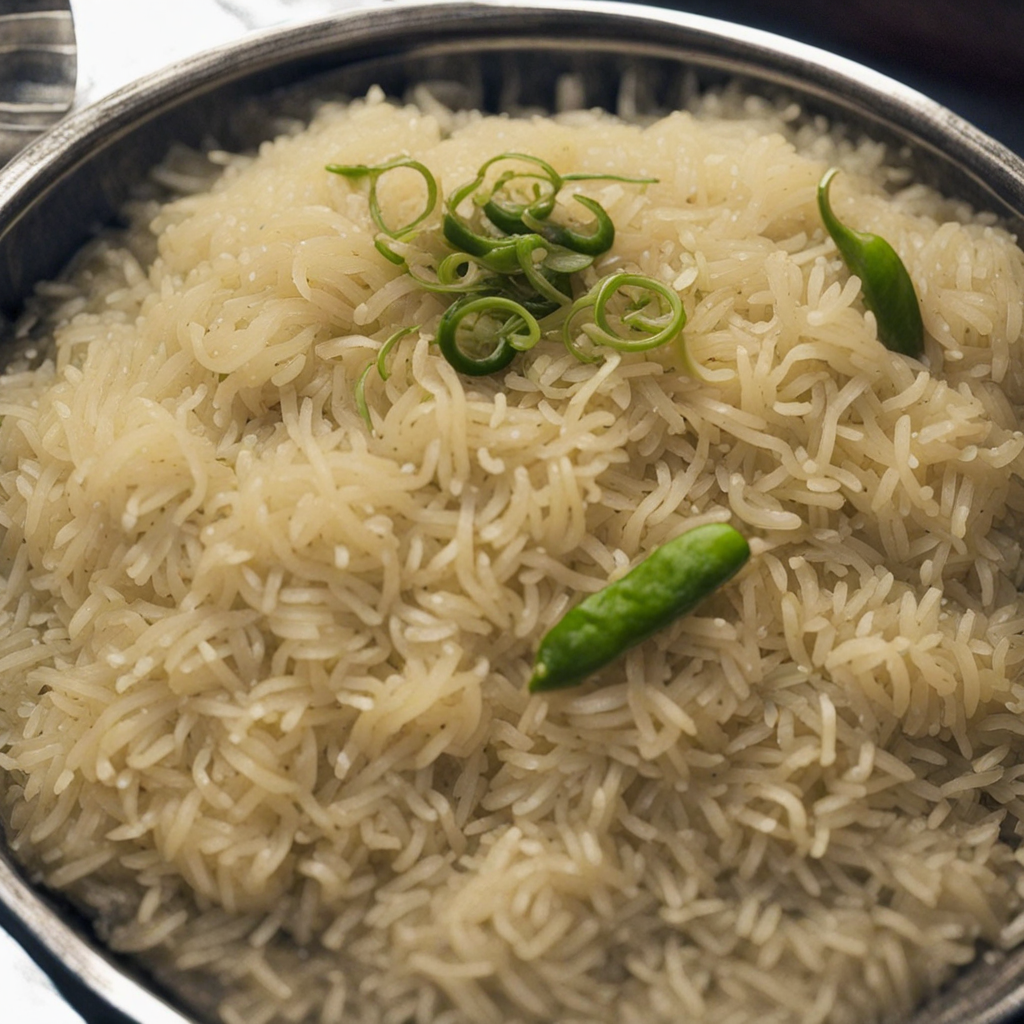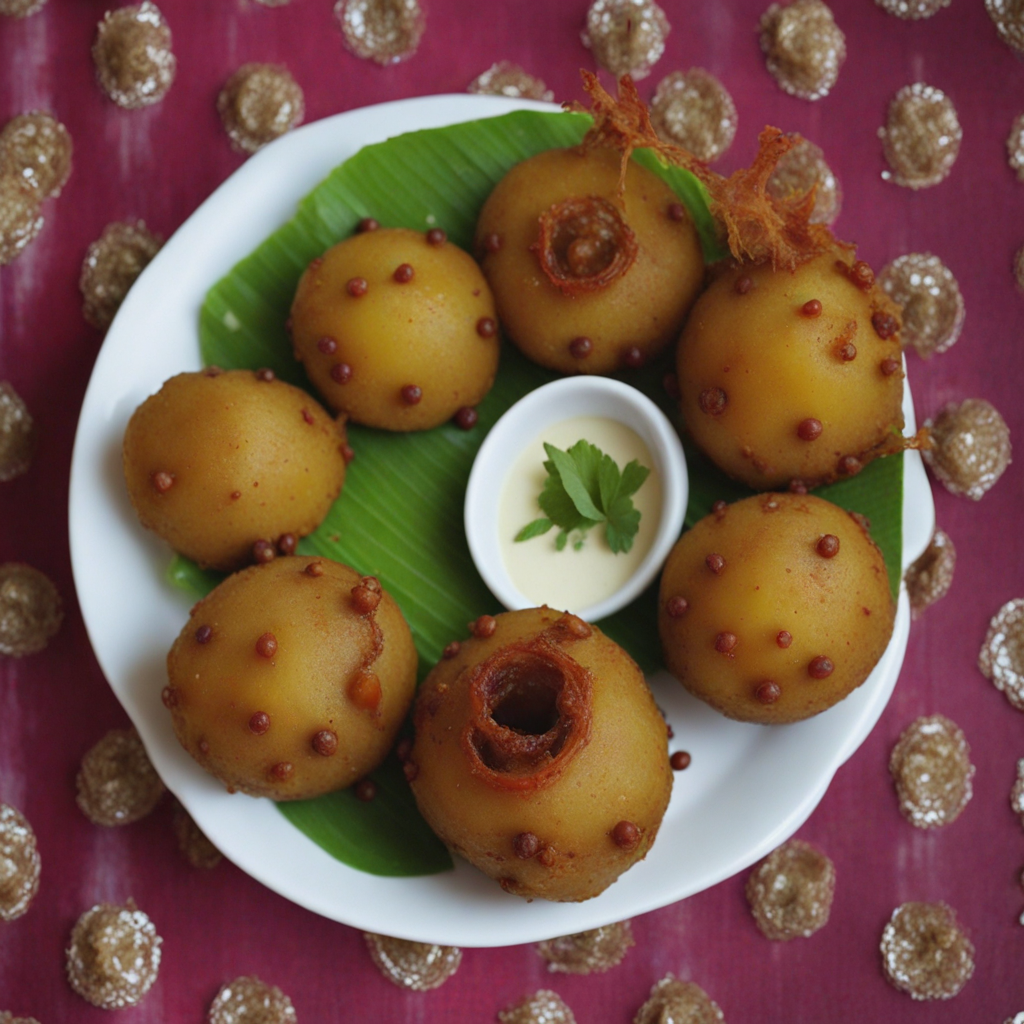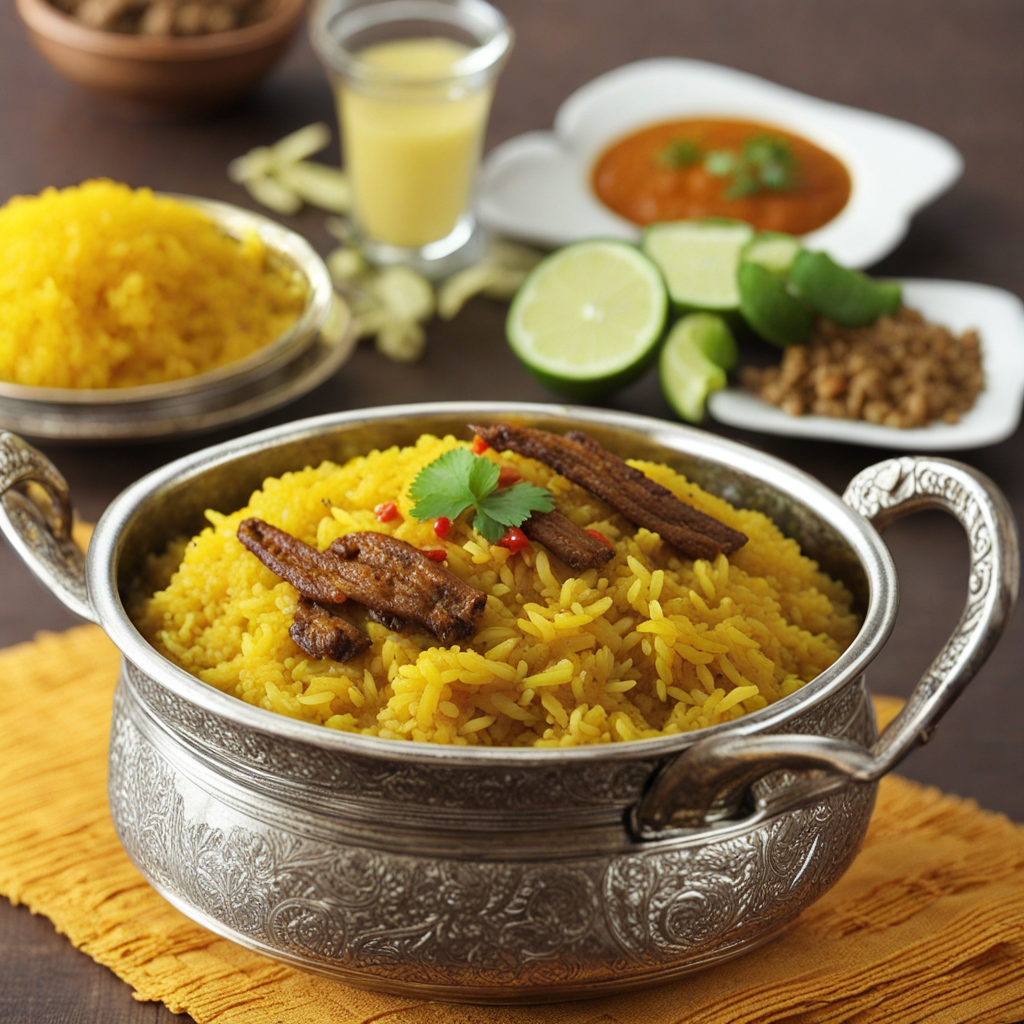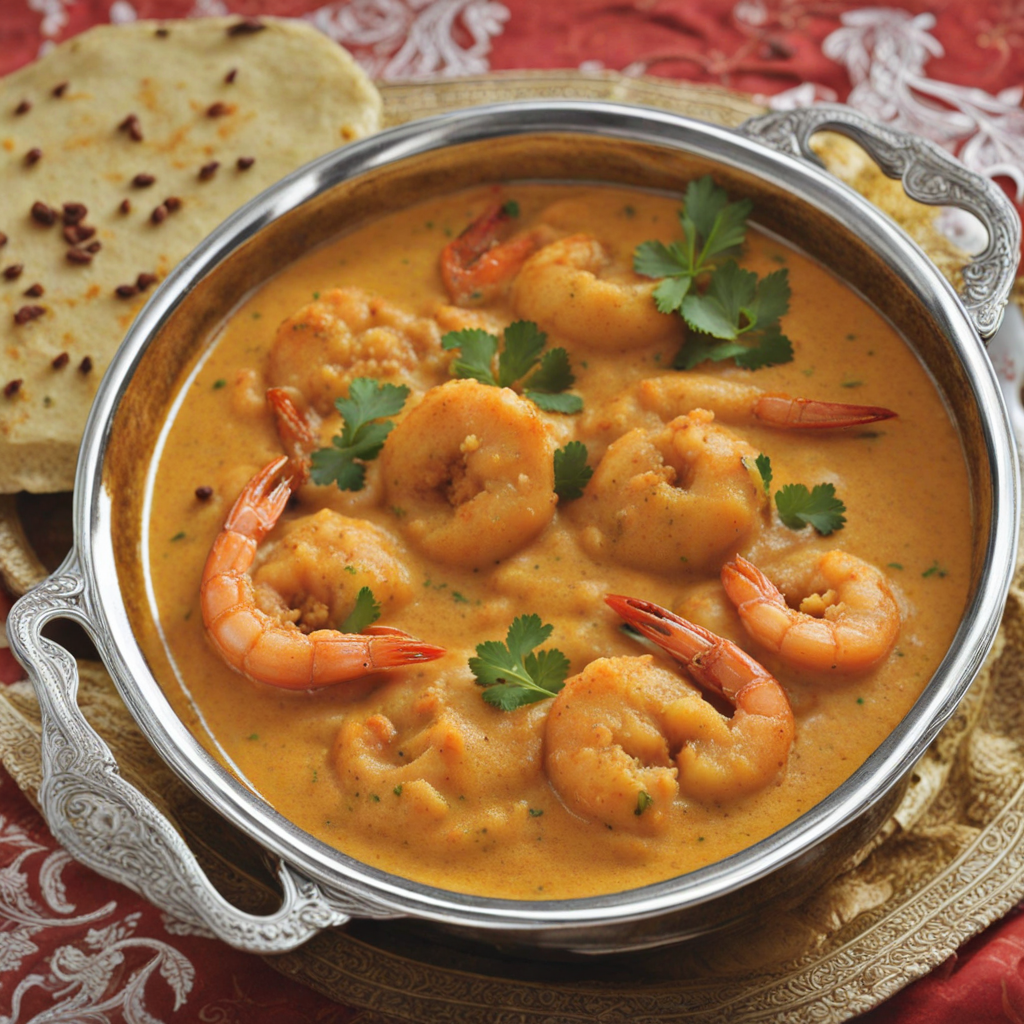Bakarkhani
Bakarkhani is a delightful traditional pastry hailing from Bangladesh, known for its unique texture and rich flavor. This crispy, flaky bread is often compared to a hybrid of a biscuit and a croissant, featuring multiple layers that create a satisfying crunch with each bite. Made from a simple yet indulgent mixture of flour, ghee (clarified butter), and sugar, Bakarkhani is typically flavored with a hint of cardamom, which adds a warm, aromatic depth to the pastry. The dough is rolled and folded several times to achieve its characteristic layers, resulting in a treat that is both light and indulgent. The preparation of Bakarkhani is an art form in itself, requiring skill and patience to perfect the layering technique. Traditionally, this pastry is baked in a tandoor, imparting a subtle smokiness and a beautifully golden-brown exterior. The contrast between the crisp outer layer and the soft, airy interior makes Bakarkhani a textural delight. It's often enjoyed with a cup of tea or paired with rich, spicy dishes, making it a versatile addition to any meal or snack time. In terms of flavor, Bakarkhani strikes a perfect balance between sweet and savory. The light sweetness from the sugar complements the buttery richness, while the spices provide just the right amount of warmth. It can also be enjoyed plain or with a spread of jam, cheese, or even savory fillings like minced meat. Whether you're savoring it on its own or as part of a larger spread, Bakarkhani offers a delightful exploration of Bangladeshi culinary tradition that is sure to excite your taste buds.
How It Became This Dish
The Enigmatic History of Bakarkhani: A Culinary Gem of Bangladesh Bakarkhani is a traditional pastry hailing from the vibrant culinary landscape of Bangladesh, particularly associated with the city of Dhaka. This flaky, crisp bread, often sweetened with a hint of cardamom and sometimes filled with a variety of ingredients, is more than just food; it embodies a rich tapestry of history, culture, and evolving traditions. Origins of Bakarkhani The origins of bakarkhani can be traced back to the Mughal period in the Indian subcontinent, especially during the 16th to 18th centuries. The Mughal Empire was renowned for its opulent cuisine, which blended Persian, Central Asian, and Indian influences. The art of making intricate breads and pastries flourished during this time, and bakarkhani is thought to be a result of this culinary amalgamation. It is believed that the name "bakarkhani" derives from the Persian words "bakar," meaning "goat," and "khani," meaning "house," suggesting that this delicacy was originally prepared for special occasions, perhaps in the households of wealthy merchants or aristocrats who held feasts involving goat meat. Some accounts suggest that bakarkhani was originally made to complement a variety of meat dishes, serving as a delightful accompaniment, while others believe it was designed to be a stand-alone snack. Cultural Significance In Bangladesh, bakarkhani is not just a dish; it has become a symbol of hospitality and celebration. Its presence is particularly prominent during festivals such as Eid-ul-Fitr and Eid-ul-Adha, where it is often served with rich, flavorful curries. The pastry's unique texture and taste make it a sought-after item in local bakeries, where it is often enjoyed with tea or coffee. Bakarkhani also finds its place in the hearts of the people of Dhaka, where it is often associated with the bustling streets and vibrant markets. The famous "Chandni Chowk" and "Kawran Bazar" are known for their bakarkhani vendors, who have perfected this art over generations. The act of purchasing bakarkhani from these stalls is woven into the daily life of many, creating a sense of community and shared experience. The Evolution of Bakarkhani As with many traditional foods, bakarkhani has undergone significant evolution over the centuries. The traditional recipe has been adapted and modified, reflecting the changing tastes and preferences of the people. Originally a simple pastry, bakarkhani now comes in various forms—some are sweet, others savory, and some are even stuffed with fillings like nuts, fruits, or meats. The method of preparation has also seen changes. Traditionally, bakarkhani was made using ghee (clarified butter), which imparted a rich flavor and flaky texture. However, with the advent of modern cooking practices and the influence of Western culinary techniques, some bakers began experimenting with different fats, leading to variations in taste and texture. Despite these changes, the essence of bakarkhani—its flaky, layered structure—remains intact. In the 20th century, as Bangladesh gained independence in 1971, there was a renewed interest in traditional foods as a means of cultural identity and heritage. The revival of bakarkhani in this period was marked by an emphasis on artisanal baking and a return to traditional methods. Local bakeries began to promote their unique recipes, and bakarkhani became a focal point in cultural exchanges, often featured in festivals and community gatherings. Modern-Day Bakarkhani In contemporary Bangladesh, bakarkhani retains its status as a beloved snack, with a growing popularity beyond its traditional roots. The globalization of food culture has introduced bakarkhani to a wider audience, with Bangladeshi diaspora communities in countries like the United States, Canada, and the United Kingdom discovering the pastry through cultural festivals, food fairs, and local Bangladeshi restaurants. Moreover, bakarkhani has inspired culinary innovation, with chefs experimenting by incorporating international flavors and techniques. Some establishments have begun offering fusion versions, infusing the classic pastry with ingredients such as chocolate, cheese, and various spices. This adaptability speaks to the resilience of bakarkhani as a dish that can evolve while remaining true to its cultural significance. Bakarkhani in Bangladesh Today Bakarkhani is now a staple in many Bangladeshi households. It is often enjoyed as a breakfast item, paired with sweet dairy products like "chhena" (a type of cottage cheese) or served alongside spicy curries. Street vendors continue to thrive, selling freshly baked bakarkhani that fills the air with its distinctive aroma, enticing passersby. In recent years, the rising trend of food tourism in Bangladesh has spotlighted bakarkhani, drawing both local and international tourists eager to experience authentic Bangladeshi flavors. Culinary tours often include visits to renowned bakarkhani shops, where the history and craftsmanship behind the pastry are shared, enriching the experience. Conclusion Bakarkhani is more than just a delicious pastry; it is a testament to the rich cultural heritage of Bangladesh. Its journey from the kitchens of Mughal nobility to the bustling streets of Dhaka illustrates the dynamic nature of food as a reflection of societal changes, culinary innovations, and cultural identity. As bakarkhani continues to evolve and adapt, it remains a cherished symbol of tradition and community, inviting future generations to savor its flaky layers and rich history. Whether enjoyed during festive occasions or as a daily snack, bakarkhani holds a special place in the hearts and palates of those who encounter it, ensuring that its legacy endures.
You may like
Discover local flavors from Bangladesh







